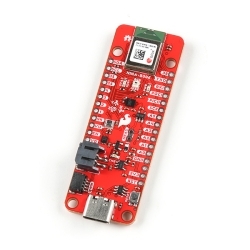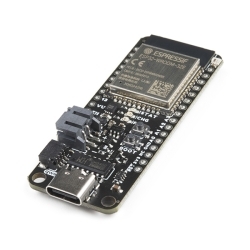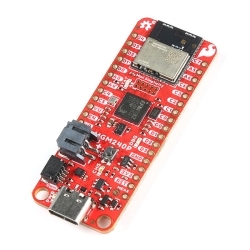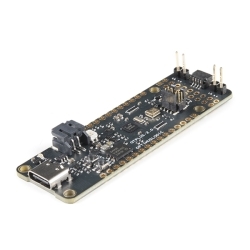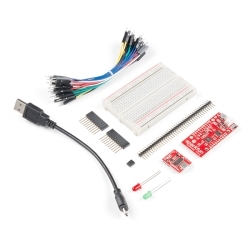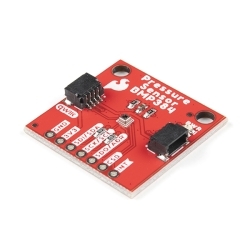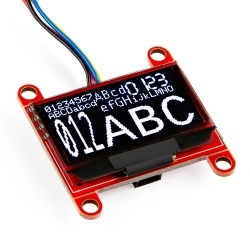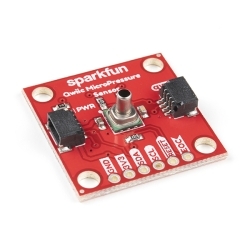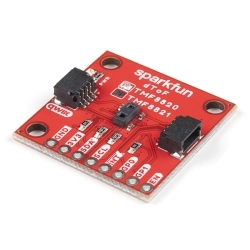SparkFun Thing Plus - ESP32 WROOM (Micro-B)
The SparkFun ESP32 Thing Plus is the next step to get started with Espressif IoT ideations while still enjoying all the amenities of the ESP32 Thing.
Helpful Documentation
Product Overview
The SparkFun ESP32 Thing Plus is the next step to get started with Espressif IoT ideations while still enjoying all the amenities of the original ESP32 Thing. Espressif's ESP32 WROOM is a powerful WiFi and Bluetooth MCU module that targets a wide variety of applications. At the core of this module is the ESP32-D0WDQ6 chip which is designed to be both scalable and adaptive. To make the Thing Plus even easier to use, we've moved a few pins around to make the board Feather compatible and it utilizes our handy Qwiic Connect System which means no soldering or shields are required to connect it to the rest of your system!
Why the name? We lovingly call it the “Thing” because it's the perfect foundation for your Internet of Things project. The Thing does everything from turning on an LED to posting data with your chosen platform, and can be programmed just like any microcontroller. You can even program the Thing through the Arduino IDE by installing the updated ESP32 Arduino Core.
The ESP32 Thing plus integrates a rich set of peripherals, ranging from capacitive touch sensors, SD card interface, Ethernet, high-speed SPI, UART, I2S and I2C. Thanks to the onboard ESP32 WROOM module, the SparkFun Thing Plus features 16MB of flash memory, 520kB of internal SRAM, an integrated 802.11 BGN WiFi transceiver and dual-mode Bluetooth capabilities, and a JST connector to plug in a LiPo battery.
Features & Specs
SparkFun Thing Plus - ESP32 WROOM Features
- ESP32 WROOM Module
- 21 Multifunctional GPIO
- Up to thirteen 12-bit ADC Channels
- Up to two DAC channels
- Up to sixteen PWM outputs
- Up to eight capacitive touch pins
- Up to three SPI Busses (only one is configured by default in the Arduino IDE)
- An available I2S Audio Output
- Up to two I2C Busses (only one is configured by default in the Arduino IDE)
- Up to two UARTs (only two are configured by default in the Arduino IDE, one UART is used for bootloading/debug)
- Thing Plus (or Feather) Form-Factor:
- Dimensions: 2.55" x 0.9"
- Two Mounting Holes:
- 4-40 screw compatible
- 28 PTH Pins
- micro-B USB Connector
- 2-pin JST Connector for a LiPo Battery (not included)
- 4-pin JST Qwiic Connector
- LEDs:
CHG- Yellow battery charging indicator13- Blue status/test LED- Buttons:
0Reset
ESP32 WROOM General Features:
- Operating Voltage: 2.3 to 3.6 V
- 2.5 µA deep sleep current
- 80 mA average operating current
- Opterating Temperature: -40 to 85 °C
- Xtensa® Dual-Core 32-bit LX6 Microprocessor (up to 240MHz)
- 448KB of ROM and 520KB SRAM
- 16MB of Embedded SPI flash storage
- Integrated 802.11b/g/n WiFi 2.4GHz transceiver
- Integrated dual-mode Bluetooth (classic and BLE)
- Hardware accelerated encryption (AES, SHA2, ECC, RSA-4096)
Documentation
Customer Reviews

Stock and Customer Discounts
Available Discounts
- $23.70 | 10+ units
- $22.46 | 25+ units
- $21.21 | 100+ units

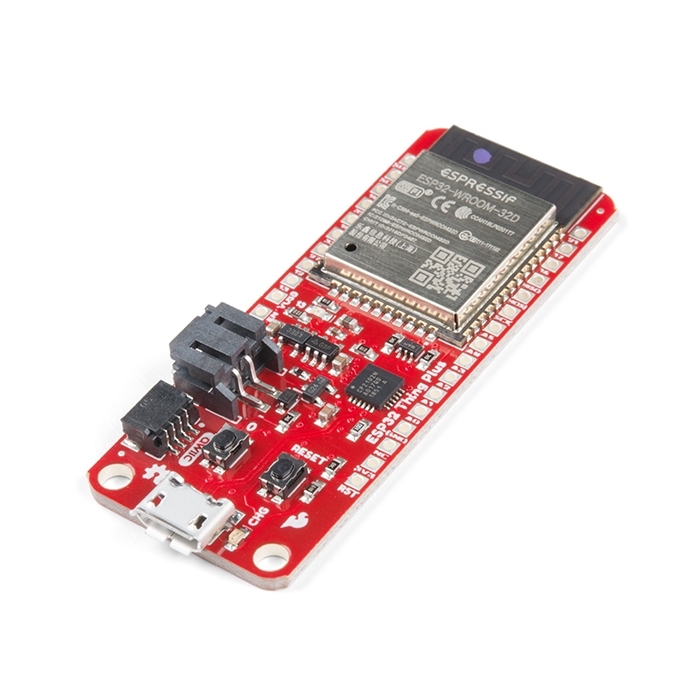
 Hookup Guide
Hookup Guide Schematic
Schematic Datasheet (ESP32-WROOM-32E)
Datasheet (ESP32-WROOM-32E)

